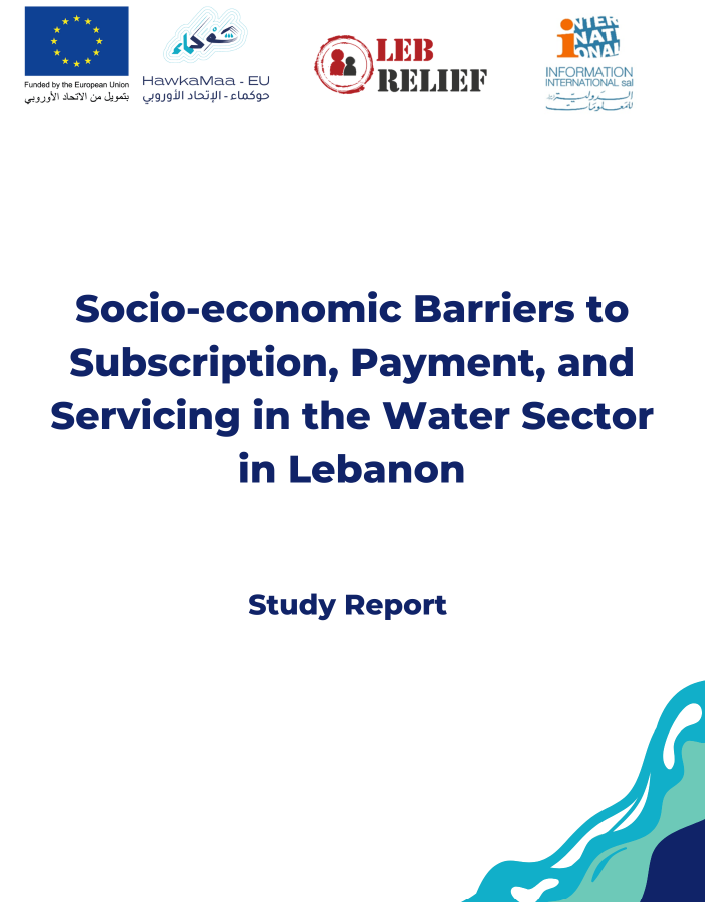Socio economic barriers to subscription payment and servicing in the water sector in Lebanon
 |
Obstacles socio‑économiques au paiement des abonnements et à la fourniture de services dans le secteur de l’eau au Liban
dossier, étude , rapport Dec 2024 ; 25 pages
Ed. Information International SAL - Beirut LebRelief - Tripoli
Téléchargeable sous format: PdF
Abstract:
The research explores opportunities for water policies that promote inclusion of economically vulnerable populations in Lebanon. The potential outcome of the research can form the basis for a more user-inclusive water sector. A survey of 600 households distributed over Akkar, North, Beirut, Mount Lebanon, Baalbek/Hermel, Beqaa, and South and seven focus groups were conducted in each of the governorates to gauge their opinions on the matter.
Key findings highlight the predominant use of the services provided by Water Establishments (WEs) supplemented by purchases from water trucks and private wells. Despite the majority indicating WEs as their primary source, concerns over irregular water supply, high subscription costs relative to income levels and perceived water quality issues emerged as significant barriers to subscription. Contents:
1. EXECUTIVE SUMMARY ....................................................................................................... 3
2. INTRODUCTION ................................................................................................................. 4
3. RESEARCH OBJECTIVE AND METHODOLOGY ...................................................................... 4
A. Research Objective ................................................................................................................. 4
B. Methodology............................................................................................................................. 5
C. Challenges and Limitations ................................................................................................... 6
4. KEY FINDINGS .................................................................................................................... 7
A. Water Sources .......................................................................................................................... 7
a. Primary Water Source ............................................................................................................................ 7
b. Most Used Water Source ....................................................................................................................... 8
a. Weekly Water Supply Frequency from the WE Network (Past Month) ......................................... 10
b. Average Daily Hours of Good Quality Water (Past 3 Months) ........................................................ 11
c. Community Perceptions of Water from the Water Establishment ................................................ 12
D. Capacity of Water Sources to Supply Household Needs ............................................... 19
E. Alternative Water Sources to Water Establishment Subscriptions ............................ 20
F. Cooperating With Private Sector Companies as a Solution .......................................... 22
G. Affordability of New Revised Tariffs .................................................................................. 23
5. CONCLUSION ................................................................................................................... 23
6. RECOMMENDATIONS ...................................................................................................... 23
Publics-Cibles:
Tout public , Acteurs de coopération , Socio-économiste , Décideurs locaux ou nationaux
Mots clefs: |
accès à l'assainissement (CI) (DT) (OP) (ope) , accès à l'eau (CI) (DT) (OP) (ope) , coûts, prix, tarifs (CI) (DT) (OP) (ope) , service public de l'eau (CI) (DT) (OP) (ope) |
Pays concerné: |
Editeurs/Diffuseurs: |
|
Information International SAL - Beirut - Liban |
LebRelief
-
Lebanese Relief Council - Tripoli - Liban |
En cas de lien brisé, nous le mentionner à communication@pseau.org